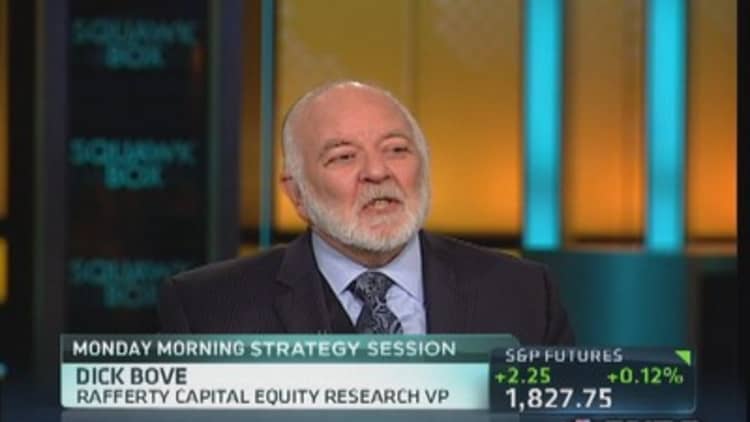More than five years after Wells Fargo purchased Wachovia at the height of the financial crisis, one of its key businesses—investment banking—is finally beginning to pay off.
Industry league tables— generally treated as scorecards ranking banks based on the number and volume of deals they did—showed the San Francisco-based company creeping into the top 10 for the first time. And Wells is winning, according to CEO John Stumpf, by taking business away from its rivals.
"We have grown market share," he said at a December industry conference, "from 4.1 percent in 2009 (at the Wachovia deal) to 5.7 percent to the first nine months of 2013."
The bank has been stealthily growing its investment banking business as rivals have pulled back. Stumpf would know, because he's been participating firsthand. Bankers say he now, like other chief executives, will make client rounds, visiting with corporate CEOs to tout Wells Fargo's expertise on a certain deal.

(Read more: Wells Fargo bear: Brace for a risky, volatile year)
That 5.7 percent market share in the U.S. ranks Wells Fargo eighth in overall revenue from investment banking, but its revenue from debt capital markets—issuance of bonds and loans—comes in third, besting peers Citigroup and Morgan Stanley.
The secret sauce may be a strong presence in securitized lending.
The bank has nabbed the No. 1 spot on asset-based lending, ousting Bank of America. A marquee 2013 deal: One such loan for J.C. Penney this spring as it was gasping for capital.
(Read more: US moves closer to letting banks into pot business)
Wells Fargo played coy about investment banking for years: Its earnings reports run into the dozens of pages, but investment banking takes up a matter of paragraphs.
And where rivals break down the dollar values of merger advisory, fixed income trading, equities and other Treasury businesses, Wells Fargo simply lumps it all as "Wholesale Banking."
When I asked one executive what lines of business in the investment bank were responsible for huge jumps in earnings, the person responded: "The normal stuff."
On Jan. 7, it placed a hardly coy full-page ad in the middle of The Wall Street Journal's Money and Investing section, touting its various big-ticket deals last year. (Bookrunning on bonds for Microsoft, Bally and the state of Illinois, for instance.)
(Read more: Wells Fargo paying $541M over bad loan claims)
Some of that "stuff" is big indeed: A ticket to a spot on an $11.5 billion credit facility and $3.1 billion in bonds supporting the acquisition of H.J. Heinz by Berkshire Hathaway and 3G Capital.
It's been a choppy business—earnings in it aren't always up each quarter—but year over year, growth has steadily remained in the 30 percent range.
Investment banking has been a bright spot for a company that, as the nation's largest mortgage provider, could benefit from diversification as housing activity slows.
—By CNBC's Kayla Tausche. Follow her on Twitter @kaylatausche.





